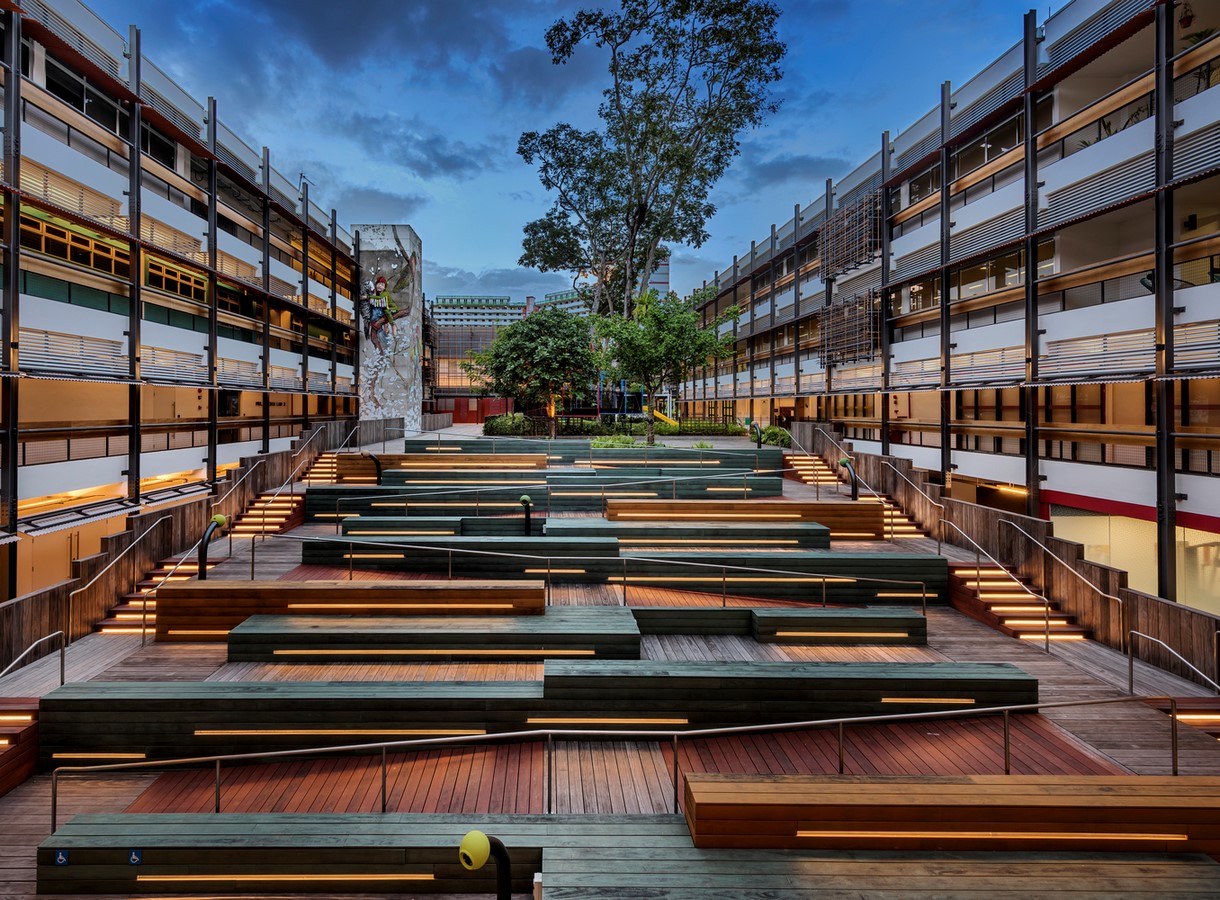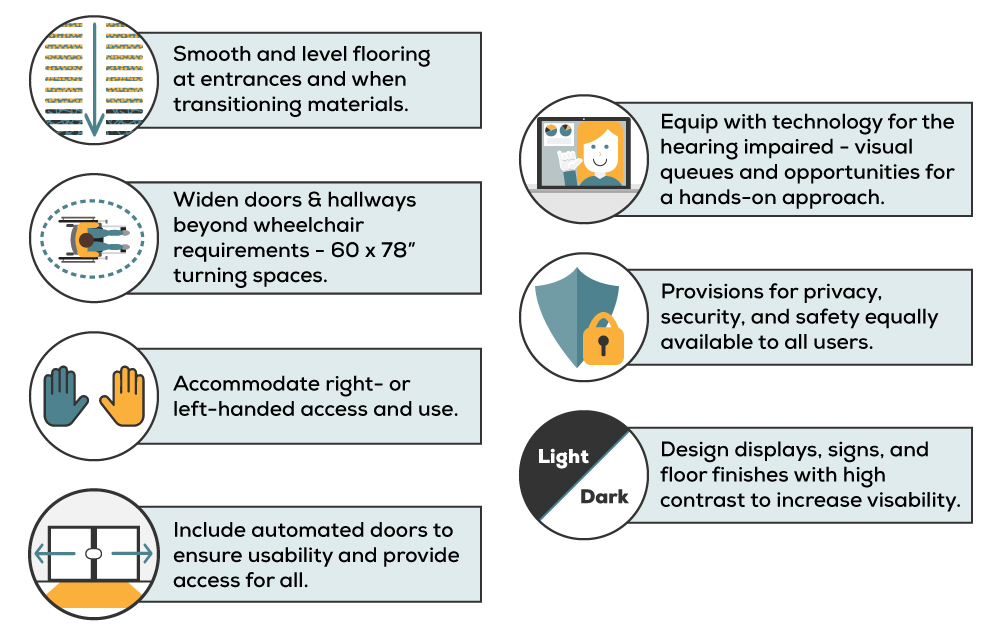How Does Architecture Integrate Principles Of Universal Design?

Universal Design is a concept of creating environments and products that are usable by all people, irrespective of their age, ability or status. It is an approach that seeks to eliminate barriers to participation in activities such as education, work, civil engagement, and social interaction. The idea is to make buildings, public spaces, and products accessible and convenient for everyone, including people with disabilities, the elderly, and children. Universal design principles can be applied to architecture, product design, transportation, and communication to make the built environment more equitable and inclusive.
The Principles of Universal Design
Equitable Use
Equitable use aims at providing the same means of use for everyone. This principle dictates that the design should be user-friendly, safe, and accessible to all individuals regardless of their physical abilities. Inclusion of features like ramps, automatic doors, and grab bars ensures accessibility for people with disabilities, but these features can benefit everyone. Easy-to-read signs and instructions can benefit people with visual or cognitive disabilities as well as non-native language speakers.
Flexibility in Use
Flexibility in use entails designing products or facilities that can be used in a variety of ways by different users. This means not only different functional requirements but also the user’s cultural or personal preferences. Examples include adjustable tables and equipment and height-adjustable counters and shelves.
Simple and Intuitive Use
The design should be easy to understand and require no specialized knowledge. The user should be able to use the product or facility without having to refer to a user manual, or need to memorize complex instructions. Providing clear instructions and clear visual cues can make all operations easier.
Perceptible Information
Perceptible information means that the design should communicate necessary information effectively to the user regardless of the environmental conditions or the user's sensory abilities. For example, fire alarms that incorporate flashing strobe lights in addition to an audible alarm to alert people with hearing impairments.
Tolerance for Error
The design should minimize the risk of harm or inconvenience caused by unintentional errors by users. Proper labeling of controls, simple instructions, and warning systems can significantly minimize user errors.
Low Physical Effort
The design should minimize the physical effort needed to use the product or facility, thereby decreasing fatigue and discomfort during use. Examples include the provision of elevators, escalators, and accessible washrooms.
Size and Space for Approach and Use
Size and Space for approach and use ensures the ability of people with varying abilities to access and perform necessary manoeuvres and tasks in a space. Providing ample space for the mobility aids, such as wheelchairs, and walkers, wide doorways and entryways, and clear circulation paths is essential.
Reasonable Tolerance for Natural Variations in Users
Reasonable tolerance for natural variations in users implies that any design should accommodate a wide range of abilities. Adapting to different body sizes, strengths, and ranges of motion can accommodate a wider population.
Why is Universal Design Important?
Universal Design is important because it promotes accessibility and convenience for all people. It ensures safety, accessibility, and convenience, even to those who face physical and/or cognitive barriers. Here are a few reasons why Universal Design is essential:
It Encourages Inclusivity
Universal Design aims to ensure that everyone can access spaces or products, thus promoting inclusivity, which enhances social connections and interactions among different groups of people. Providing everyone with the same opportunity to participate in activities creates a more empathetic and cohesive community.
It Decreases Costs of Retrofits
Universal Design facilitates the construction of spaces or products that can be used by all and doesn’t require retrofitting later. This saves the costs of corrections or adjustments later.
It Increases Safety and Convenience
Universal Design ensures that spaces and products are safe, accessible, and free from barriers. This makes the products or space safer and more convenient for a wider range of users.
FAQ
What Is the Best Way of Implementing Universal Design?
The best approach is to get a Universal Design expert involved in the design process at the outset. This will allow coordinators to identify potential obstacles and account for them in the planning phase. Providing clear communication, diverse team members, and ensuring the client understands the value of Universal Design will make it easier to incorporate it in the design process.
Is Universal Design an Extra Cost for Designers or Clients?
No, it is not. Some design features may increase costs, but many Universal Design principles are actually cost-saving, as they can avoid the expense of retrofitting to provide better accessibility and convenience for people with disabilities.
Is Universal Design Only for People with Disabilities?
No, Universal Design is for everybody. It's not only for people with disabilities. It provides a more inclusive environment for everyone and caters to different abilities and lifestyles. Making a space more accessible, for example, includes improving lighting and reducing glare, which can benefit everyone.
What Are the Benefits of Universal Design for a Community?
Universal Design has various benefits, some of which are:
- Increased social connections among various groups of people in a community.
- Promotes a shared sense of space and community.
- Improves the health and safety of individuals.
- Increases access and convenience
Closing Thoughts
Universal Design promotes equitable and inclusive environments that cater to everyone, regardless of their abilities. It’s important to implement Universal Design principles in the design phase of products and buildings to ensure their accessibility and convenience. This approach not only benefits people with disabilities but benefits everyone, thus promoting inclusivity among different groups of people. By committing to Universal Design, we can ensure that spaces and products are safe and accessible, providing opportunities for all individuals to participate in community and social interactions.



Post a Comment for "How Does Architecture Integrate Principles Of Universal Design?"